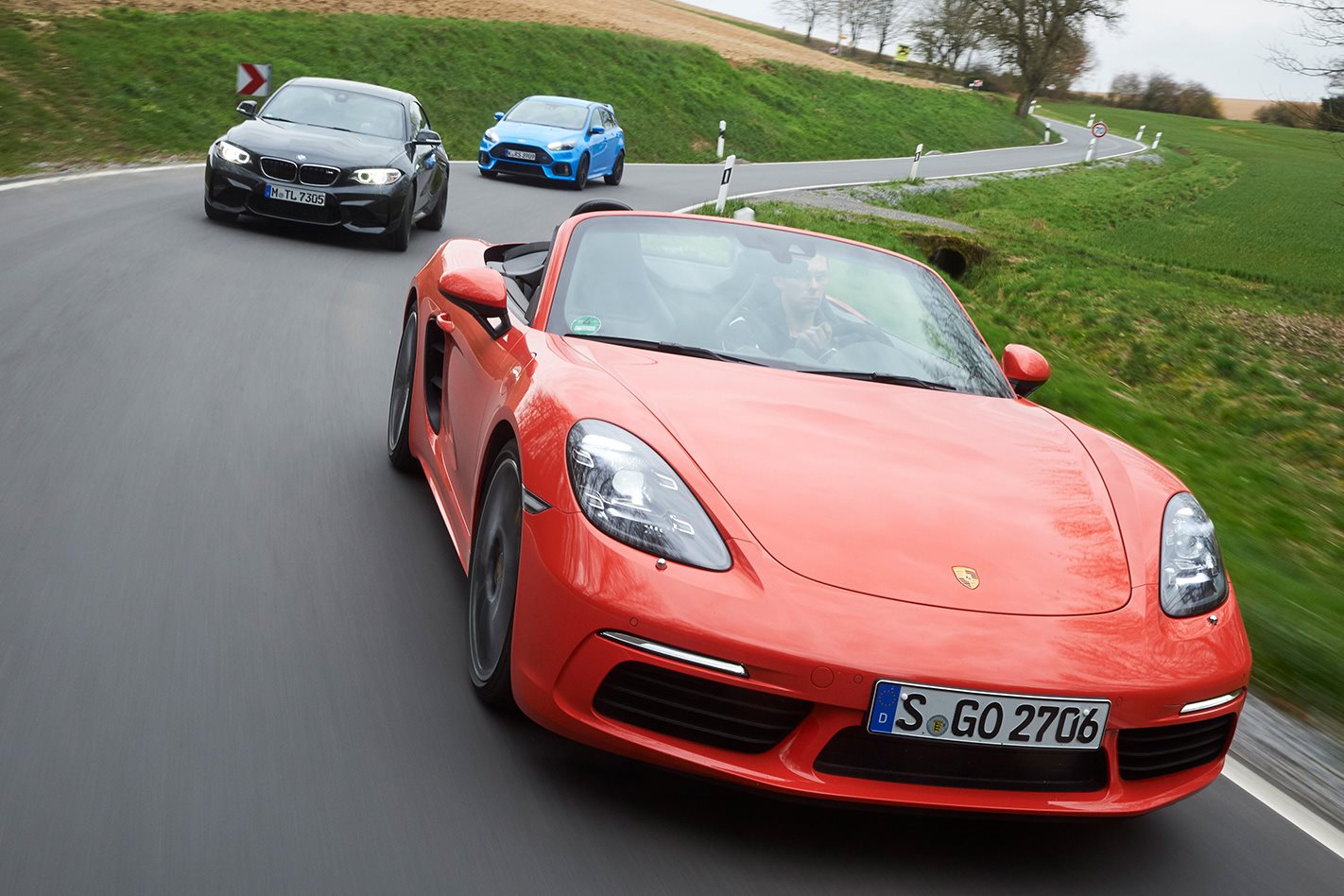This trio does not exactly look like the makings of your classic three-car comparison.
Maybe it’s better to look at this as a get-to-know-you session with three of the hottest new hard-charging performance cars. The good news is we’re not talking ultra-exclusive limited-edition vehicles with astronomical price tags.
In a fast-changing automotive world dominated by digitalisation, autonomous driving and alternative powerplants, here are three respected drivers’ cars that blend heritage and innovation, ability and relative affordability.
There are three chassis layouts here, the engines all turbocharged. We could moan about the departure of the sharply tuned naturally-aspirated engine, but instead let us focus on what we aim to discover.
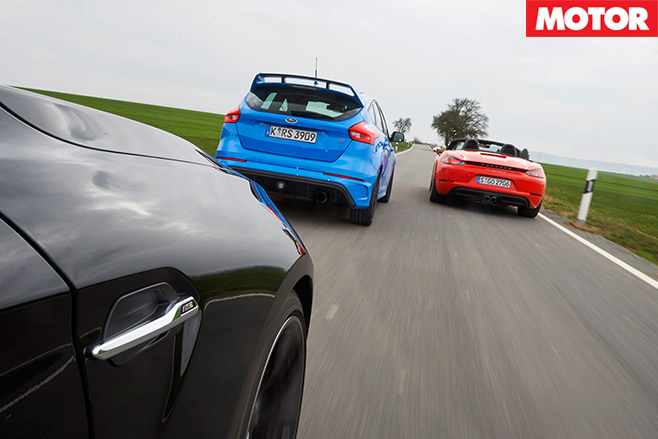
Uniquely, the Porsche retains a time-honoured starting strategy: a key inserted adjacent of the steering column. Fired up, this new boxer four-cylinder lets you know it’s awake, especially in Sport with the top down and with the two-tone exhaust set to blare. Give it some stick and listen as the 2.5-litre unit spins smoothly, perfectly linear but also strangely monosyllabic.
Redlined at 7500rpm, it only takes 6500rpm to round up all 257kW in ‘S’ guise. While the torque curve of the previous atmo flat-six rose gently like the backrest of granddad’s lounge chair, the twist curve of the new turbo four is as flat as a floor. Between 1900-4500rpm, there’s 420Nm to play with.

Having said that, the manual transmission could do with shorter throws, the throttle response in Track mode is scarily skittish, and the fake lift-off misfiring of all three cars is just as embarrassing as the throttle blipping during downshifts, not to mention the nuisance of squaring off the bottom of the steering-wheels.
Our M2 is gothic black inside and out; even the 19-inch wheels are as dark as a night shift in a coal mine. Just about every detail you see here is included in the generous standard specification. Under the bonnet is a turbocharged 272kW 3.0-litre straight six. The double-clutch transmission is nice to have, but only if the owner is committed to plucking gears themselves. Upshifts are particularly rewarding in DSC Sport.
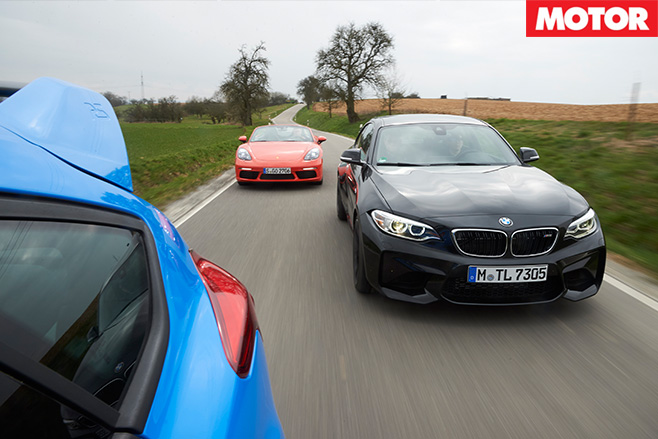
According to Porsche, the new Boxster’s throttle response is every bit as brisk as the pre-718 models. According to our test car, however, there is still room for improvement: turbo lag remains an issue despite the variable-geometry turbo, a loose bypass valve and a reprogrammed black box.
Flooring the loud pedal at 2000rpm in fourth creates a momentary blackout followed by a highly energetic kick in the rear. One possible explanation is the long and complex intake system put under pressure by a solitary turbo positioned in the centre of the pile of pipes. Fuel economy? It’s a clear improvement over last year’s vintage, with an official number in the same ball park as M2 and RS, though all three become heavy drinkers under duress.
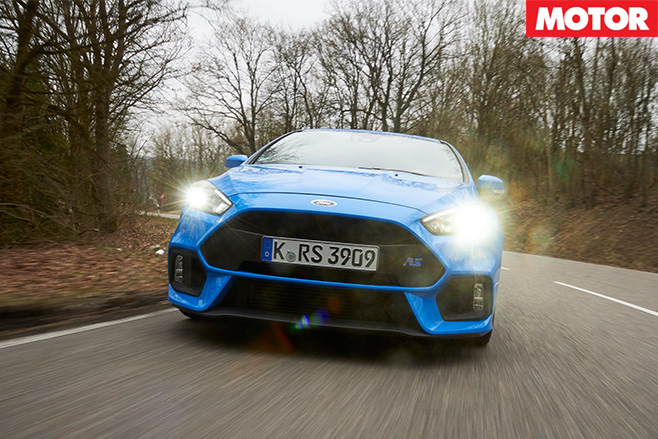
Yes, this hatchback is a remarkable piece of kit in more ways than one. It owes much of its character to the adaptive all-wheel drive system which addresses each wheel individually. Other sporty AWD models are perfectly happy with only a modest torque bias to the rear, but the RS can send up to 70 per cent of the twist to the tail and, widely reported, even has a ‘Drift’ mode. It’s an adventurous type of AWD system that encourages you to swat flies with the side windows.
What the Ford lacks is a mix-and-match drive mode configuration. As it is, only Normal warrants the most comfortable damper setting, the most relaxed throttle response and the most laid back steering calibration. Drift permits lairiness, but it does so only in combination with a nervous tip-in/tip-out behaviour and jerky steering. The ability to mix from the menu would be nice.
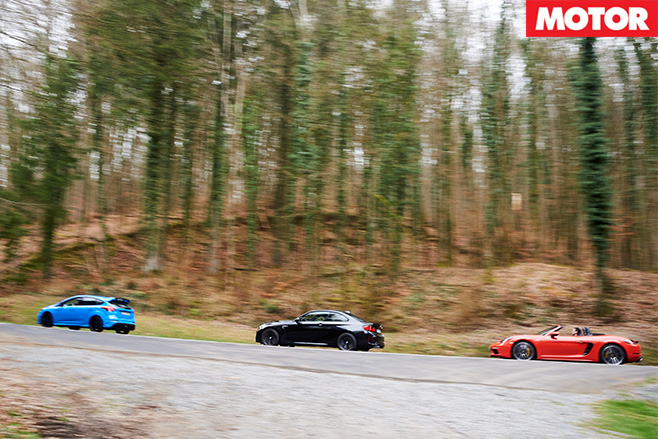
Over the really rough stuff, the edgy here-there-and-everywhere BMW is hard work. But what do you expect from a rebodied short-wheelbase M4 clone? As soon as it finds smoother ground, the M2 morphs into a precise and responsive corner-carver.
From behind the steering-wheel, the RS looks like a tarted up Avis or Hertz-type Focus and the M2 has similarly fleet-and-family familiarity, but the Boxster is special. The driving position is bang-on, though the merits of the lava orange paintwork over black-brown interior trim are debatable.
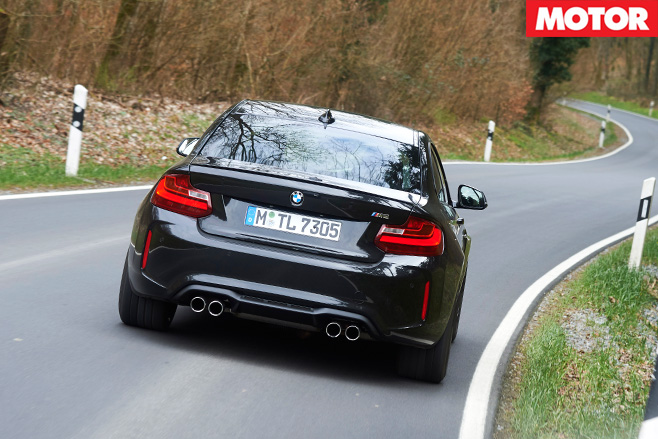
Long undulations are no problem at all, transverse irritations don’t upset things and low-speed ripples and potholes don’t destroy the composure. Although the three candidates are separated by mere nuances, the Porsche’s suspension is marginally less brusque.
Unlike the M2 and the Boxster, the Focus RS isn’t overly dependent on tyre temp to display good manners. The handling accurately reflects the vehicle’s DNA: neutral at the limit and stable at speed. Sounds a tad uninspiring, but it’s not. The weight of the steering works in perfect synchronicity with the torque flow and the chassis movements.

Unlike the 1 Series M coupé, where a lack of downforce threatened to lift the front skirt at speed, the M2 tends to rest deep within itself. Sudden lane changes? No worries. Emergency braking manoeuvre on the autobahn? This car has a life insurance contract signed with brake dust and rubber marbles. Gearing? Long enough for economy, short enough to summon fifth at 200km/h. Noise? Yes, and plenty of it, but not as intense as under the awning of the Boxster. It sounds good, too.

As expected, the specs-on-paper would not yield a winner here. We’re not comparing rear seat space nor how-many-kays-per-tank. Cars such as these are about passion and punch and we’re open to emotional persuasions, prepared to let design and prestige influence the verdict, to put the feel-good factor on its pedestal.
Maybe the final shootout can be postponed for a moment to let us look at alternatives. For far less than our rear-drive contenders, any Ford dealer would happily sell you a Mustang, complete with V8 drawl, but that’s a hopeless proposal for roads that require pinpoint handling.
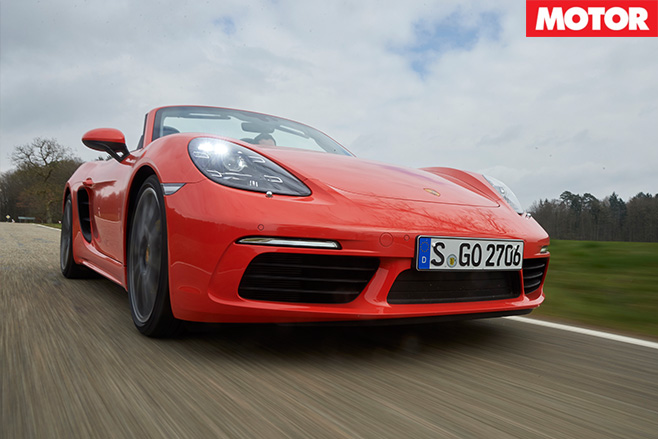
The BMW fraternity may be tempted by the M235i, be it a fixed-head or a drop-top, but nostalgics may even consider a low-kay V8-engined M3.
The Porsche really is two cars in one, with two perfectly useable luggage compartments, beautiful build quality, great appearance – it’s generally hard to fault. It collects plenty of street cred points; it is the quickest and fastest contender here; it has the sweetest steering and absolutely indestructible brakes. As far as the stats go, the four-cylinder engine ticks all the right boxes. So if money is no object and you have never before tried – and been enthralled by – a flat six, the Boxster could have your name written all over it.
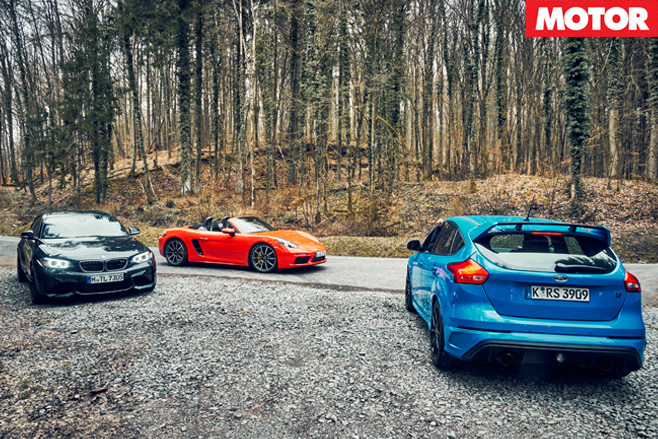
That the Focus RS has the roomiest cabin and the biggest boot doesn’t even enter this equation. What makes the heart beat that little faster for the Ford is the keen price tag (10 points), that special Q-car surprise factor (20 points) and the admirable level of dynamic competence (70 points).
We have no doubt at all that Henry’s finest this side of the GT supercar has what it takes to play the game at the same high level as Boxster S and M2.
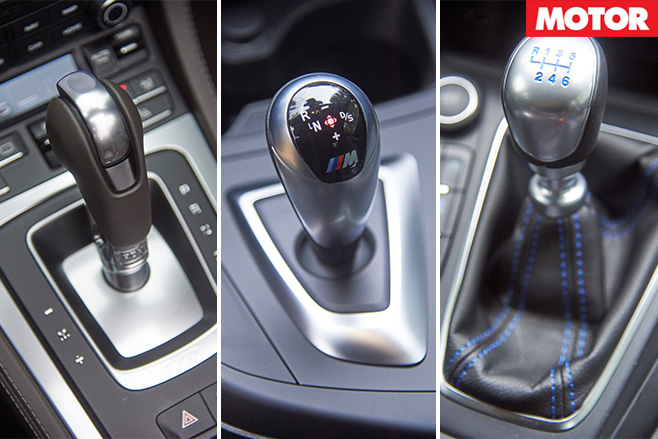
| u00a0 | PORSCHE 718 BOXSTER S | BMW M2 | FORD FOCUS RS |
| Body | 2-door, 2-seat roadster | 2-door, 4-seat coupe | 5-door, 5-seat hatch |
| Drive | rear-wheel | rear-wheel | all-wheel |
| Engine | 2497cc inline-4, DOHC, 16v, turbo | 2979cc inline-6, DOHC, 24v, turbo | 2261cc inline-4, DOHC, 16v, turbo |
| Power | 257kW @ 6500rpm | 272kW @ 6500rpm | 257kW @ 6000rpm |
| Torque | 420Nm @ 1900-4500rpm | 465Nm @ 1400-5560rpm | 440Nm @ 2000-4500rpm (470Nm overboost) |
| Transmission | 7-speed dual-clutchu00a0 | 7-speed dual-clutch | 6-speed manual |
| Weight | 1385kg | 1520kg | 1575kg |
| L/W/H | 4379/1801/1280mm | 4468/1854/1410mm | 4390/1823/1472mm |
| Steering | electrically-assisted rack-and-pinion | electrically-assisted rack and pinion | electrically-assisted rack-and-pinion |
| Price as tested | $143,400 | $98,900 | $50,990 |
| Pros | Seriously fast; easy/satisfying/fun to drive | Better than an M4 for $60K less; drifteru2019s delight | Practical performance perfection; amazing price |
| Cons | Engine lacks character; pricey in this company | Ride can be terse; can be a handful at the limit | Stiff ride; canu2019t mix u2019nu2019 match drive modes |
| Star Rating | 4.5/5 | 4.5/5 | 4.5/5 |

